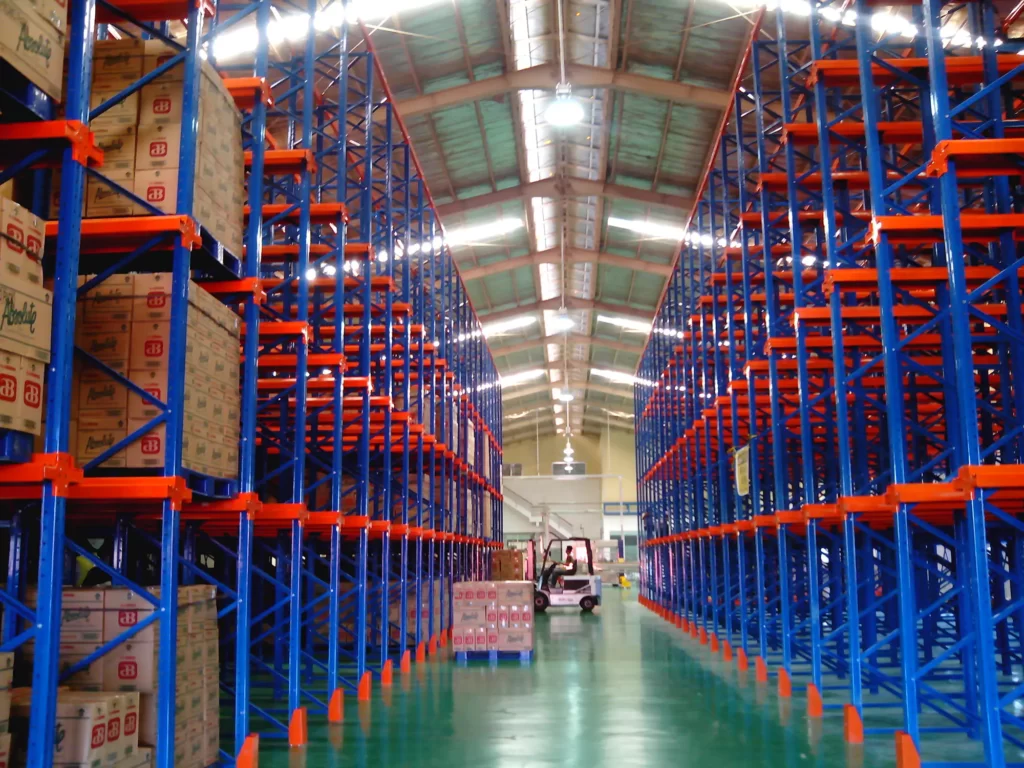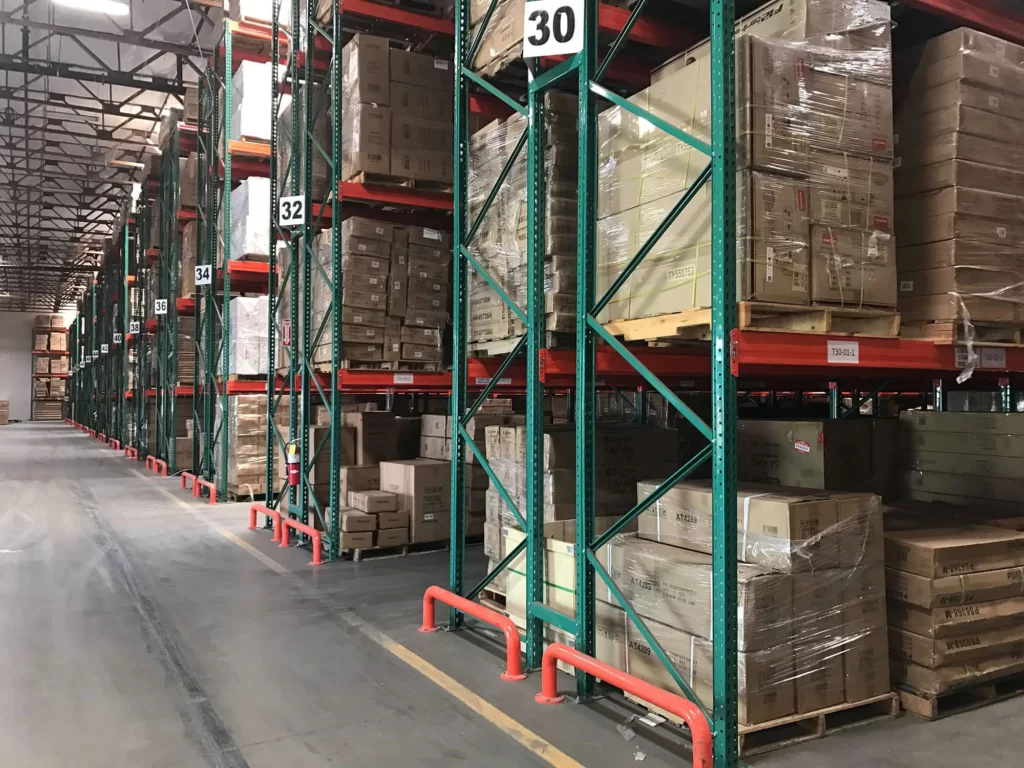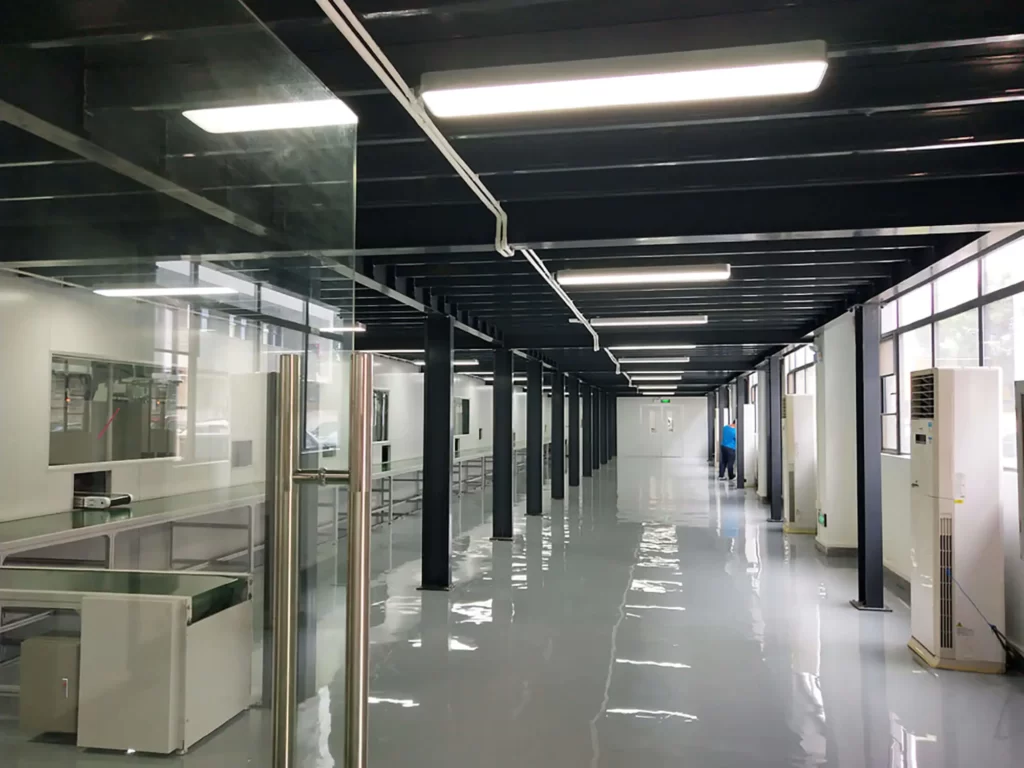Storing goods effectively and efficiently is a big challenge in the pallet storage warehouse. Poor storage may result in space wastage, product damage, and inefficient inventory management. If these challenges persist, they drain resources and disrupt supply chain management, resulting in higher costs and delays.
Don’t worry—you can overcome challenges by getting in-depth insights on storage pallets, warehouse concepts, design, types, etc. This way, you can protect your goods, improve efficiency, and streamline operations. This article aims to educate you and guide you with the knowledge and correct approach to mastering warehouse pallet storage. Let’s get started!
Understanding Warehouse Pallet Storage
What is a Pallet?
You can define a Pallet as a flat structure. The primary materials which go into the construction of the pallet include metal, wood, or plastic. Using pallets in warehouse, you can transport or support goods effectively and efficiently. Pallets are common globally because of their standard size. You can handle pallets through pallet jacks, forklifts, and other compatible equipment. The vast and standard length of the pallet is 48 by 40 inches. While there are different sizes also exist.
Material Types of Pallets
There are different types of pallets, including:
Wooden Pallet Organizers
One of the most common among pallet types. The key perks of these pallets are easy repair, cost-effectiveness, and recycleability. But the durability of wooden pallets is questionable, you can experience splintering with excessive usage and time.

Metal Pallet Organizers
Metal pallets are highly durable and can easily bear heavy loads. They can be used in industries where durability and strength are essential. However, metal pallets are heavier and more expensive, which can lead to higher shipping costs.

Plastic Pallet Organizers
The plastic pallets for warehouse are sturdy and durable. They effectively resist the impact of chemicals and moisture. You can use them in industries where hygiene maintenance is crucial, especially for pharmaceuticals and food. Please note that the cost of these pallets is higher than that of wood pallets.

Advantages of Pallet storage warehouse
Pallet warehouse storage offers multiple benefits, such as:
Cost Effectiveness
Pallets are highly cost-effective. You can store goods without requiring additional storage space. They also contribute to efficient storage.
Accessibility and Convenience
You can easily arrange and move pallets within a warehouse. This makes product loading and unloading convenient.
Versatility
Using pallets, you can store a wide variety of products. For example, you can store food items, heavy machinery, and even beverages.
Challenges of Pallet Warehouse Storage
The key challenges that you can face in pallet storage include:
Effective Space Utilization
Maximizing the utilization of available space is difficult, especially in smaller warehouses. Proper planning is essential to using every inch of your warehouse.
Damage Prevention
Poor handling of goods placed on Pallets can lead to damage and loss. To cope with this challenge, you need to deploy proper handling and stacking procedures.
Management of Inventory
WMS or warehouse management system is essential to keep accurate and up-to-date track of inventory.
Types of Pallets Storage Systems
Choosing the correct pallet storage system determines the overall efficiency and space optimization. Different types exist for pallet storage systems, such as:
Static Pallet Storage Systems
The static storage system, as the name implies, keeps pallets in a static or fixed position. These systems are ideal for warehouses that store larger quantities of the same product.
Stacking Racking
In this type, the pallets are stored over each other in blocks to form a stack. Block stacking is cost-effective and does not require additional equipment. Please note that this method works only for sturdy pallets that can bear the weight of other pallets on top.

Pallet Racking
The pallet racking comprises horizontal rows of racks where you store pallets. You can easily access each pallet in this system, and it helps you use maximum vertical space. Pallet racking has further two types:

· Selective pallet racking, which allows you to access each pallet directly
· Double-deep racking, which enables storage of two pallets on each aisle side in the deep
Dynamic Storage Systems
As the name implies, the dynamic storage system facilitates frequent movement and higher-density storage of goods. Such systems are suitable for warehouses featuring high turnover of inventory:
Drive-In/Drive-Thru Racking
In this racking type, forklifts are used to load or unload the pallets. This is a perfect example of a higher-density storage system. Drive-in or Drive-Thru systems perfectly accentuate the LIFO (Last-in and First-out system) because forklifts can access and retrieve the first pallet in each row.
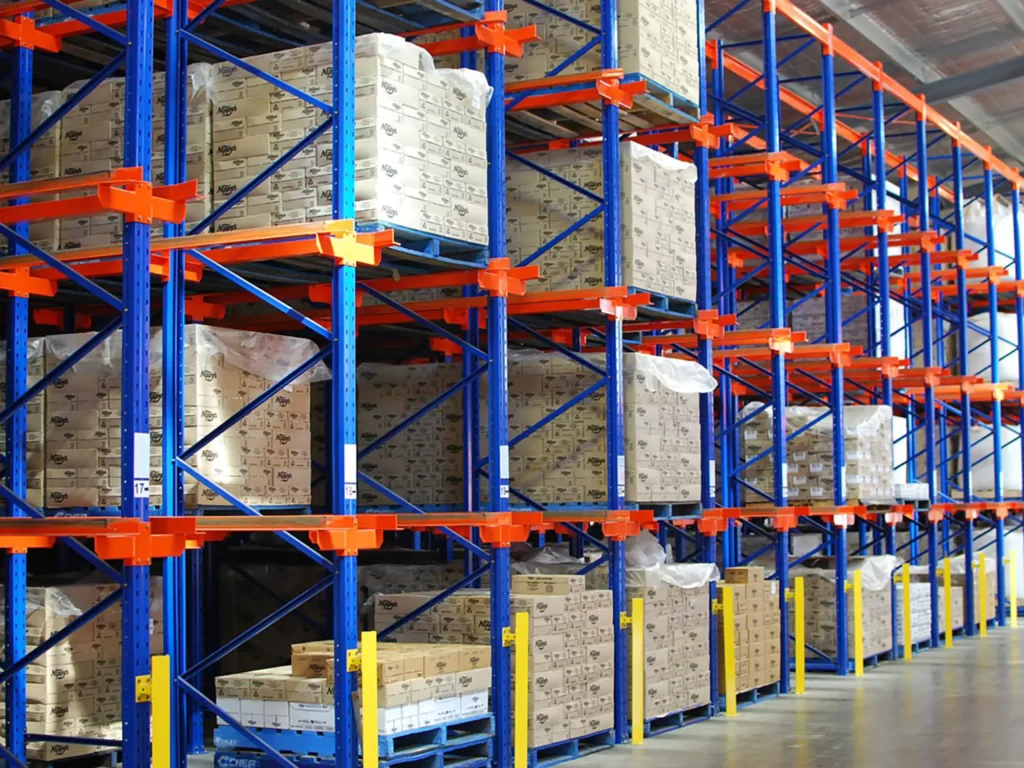
Push Back Racking
In this racking type, inclined rails store the pallets. The addition of each new pallet pushes back the previous one. Push back racking allow you to store multiple pallets in single row, and it also facilitates the LIFO system.

Pallet Flow Racking
Pallet flow racking also refers to gravity flow racking. The pallets move on inclined rails under the force of gravity from the loading end to the picking end. It works on a FIFO (First-in, first-out) basis. Pallet flow racking is perfect for perishable goods.

Carton Flow Racking
Carton flow racking is the same as pallet flow racking. The only difference is that it stores smaller items, including boxes and cartons. You can also use this system for order-picking operations.

Specialized Storage Systems
Unique storage systems are a perfect fit for products that require exceptional storage different from traditional ones. The critical storage systems under this category are:
Mezzanine Levels
In the mezzanine, you add additional flooring to the existing warehouse without changing the original footprint of the building. The mezzanine is perfect for warehouses that have high ceilings.
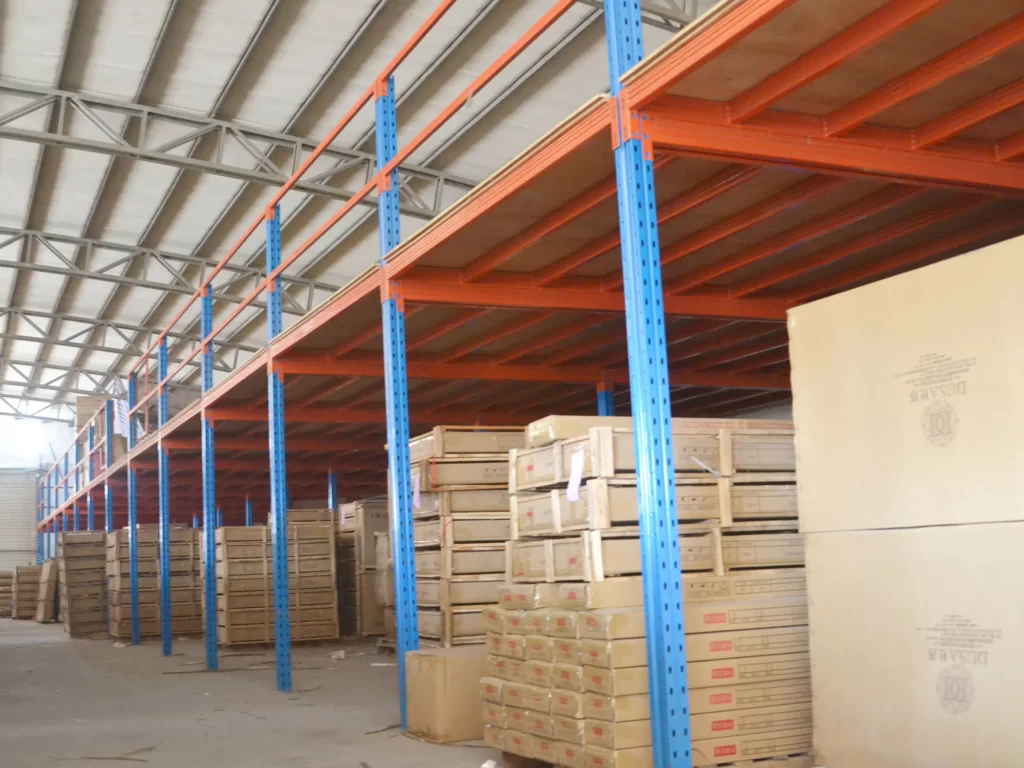
Cantilever Pallet Storage Warehouse Racking
Cantilever racking is perfect for storing bulky, long products such as furniture, lumber or even pipes. The cantilever racking system comprises arms extending from the vertical column, allowing you to store items of different lengths easily.
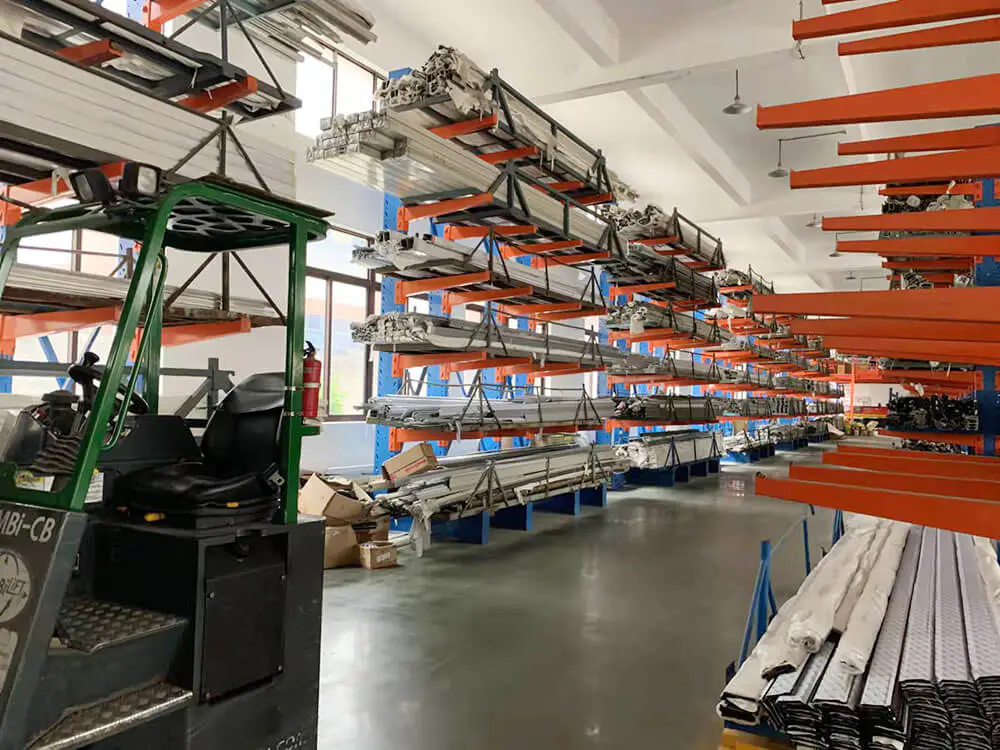
Mobile Racking
As the term mobile suggests, these systems are mobile. They have bases that can move on floor tracks. Mobile racking systems allow you to eliminate aisles and effectively use space, making them perfect for low-space warehouses.
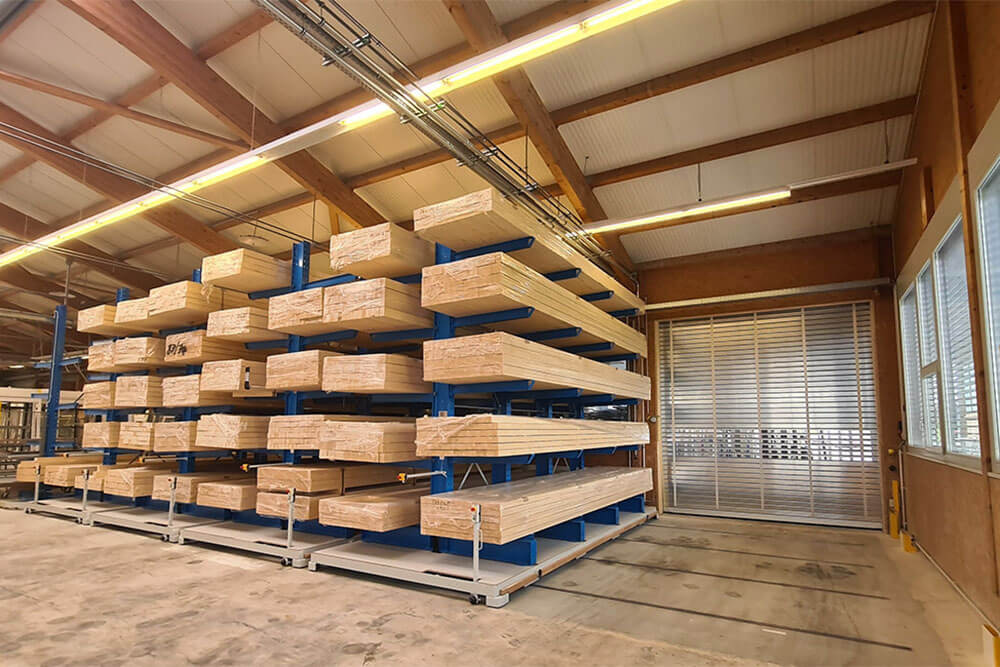
Comparison of Common Warehouse Pallet Storage Systems
| Sr. No. | Feature | Stacking Racking | Pallet Racking | Drive-in/Drive-Thru Racking | Push-back Racking | Pallet Flow Racking | Carton Flow Racking |
| 1 | Accessibility | Low | Moderate | Low (interior pallets) | Moderate | High | High |
| 2 | Space Utilization | Low | Moderate | High | High | High | High |
| 3 | Cost | Low | Moderate | Moderate | High | High | High |
| 4 | Inventory Management | LIFO (Last-In-First-Out) | FIFO (First-In-First-Out) or LIFO | LIFE | FIFO (First-In-First-Out) | FIFO (First-In-First-Out) | FIFO (First-In-First-Out) |
| 5 | Suitability | Low-volume storage | Moderate- to high-volume storage | High-volume, bulk storage | Moderate-volume storage | High-volume, fast-moving items | Picking individual cartons |
| 6 | Feature | Block Stacking | Pallet Racking | Drive-in/Drive-Thru Racking | Push-back Racking | Pallet Flow Racking | Carton Flow Racking |
Factors Affecting Pallet Storage Warehouse Design
For effective and efficient pallet storage design, multiple factors need your attention. The critical factors in this regard are:
Size and Layout of Pallet Warehousing
The first factor that impacts the pallet storage system is the layout and size of your warehouse. To improve the design, consider floor space, doors, columns, the height of the warehouse, and other obstacles. An effective plan will help you utilize your warehouse to the maximum.
Product Characteristics
The product type you will store in your warehouse greatly influences the storage design. Pay attention to the product height, width, length, and total quantity you want to store. Please note that heavy-weight products require a more muscular rack system.
Order Picking Method
The order-picking method directly influences the pallet storage design system. For manual picking, you need to use wider aisles to accommodate other equipment and forklifts. In case you pretend to use the robotic picking or accumulation of conveyors, you need to design a racking system accordingly.
Turnover Rate for Inventory
The frequency at which you load or unload products from your warehouse significantly affects the storage system design. For higher turnover, you need to use a dynamic storage system. It will help in the quick storage and retrieval of the products. If the turnover is lower, then select a static storage system design.
Safety Compliance and Regulation
While designing the pallet storage system, you need to ensure that your warehouse complies with ANSI and OSHA. ANSI stands for the American National Standard Institute, and OSHA stands for the Occupational Safety and Health Administration. Following these standards will ensure safety from injuries and accidents.
Pallet Warehousing Cost Considerations
One significant factor impacting the storage system design is cost. The perks of storage systems in the extended run matter. Spending more on a quality and durable system will help you benefit from negligible product damage, less repair and maintenance, and better efficiency.
| Sr. No. | Cost Factor | Description | Example Cost Range (USD) |
| 1 | Pallet Racking System | Includes uprights, beams, and safety components | $20 – $75 per pallet position |
| 2 | Floor Loading Capacity | Reinforcing the warehouse floor to support the weight | $2 – $10 per square foot |
| 3 | Warehouse Management System (WMS) | Software for inventory management and optimization | $50 – $200 per user/month |
| 4 | Forklifts | Equipment for pallet handling | New forklift: $20,000 – $100,000 |
Optimization of Storage Pallets
Follow these strategies to maximize the pallet storage effectively:
Maximum Space Usage Techniques
You can optimize your pallet storage by using maximum vertical space. This way, you don’t need to expand the flooring; instead, you can use height. You can also optimize your aisles. Narrowing down the aisles can help you maximize the storage capacity. Please note that doing so requires proper accommodation of forklifts as well as other equipment.
Effective Inventory Management
You need to follow proper and correct inventory management strategies. The two common strategies are FIFO and LIFO. Please note for perishable items, use FIFO, and for non-perishable items, use LIFO. Another important strategy that you can adopt is the ABC analysis. This strategy aids in the retrieval and storage of products depending on their usage frequency and importance.
Weight Balancing and Load Distribution
It is critical to the stability and safety of the pallet storage system. Make sure the system has an even weight distribution. Also, store heavier items on lower levels to prevent them from collapsing or tipping. Appropriate frequency of inspections helps keep the system well maintained in terms of load-bearing capability.
Pallet Stacking and Stability
While stacking your pallets, do it vertically in such a way that one set of pallets will be on another. You can include shrink wraps and pallet collars for controlling load shifting or load destabilization. Furthermore, locating the denser loads low down also helps in providing stability.
WMS Implementation
By implementing it right, the WMS can help increase and optimize the pallet storage system. It allows you to track new information concerning inventory, storage places, and orders. WMS also helps in automating packing, picking, and shipping tasks. It eventually leads to doing away with human mistakes as well as enhancing efficiency.
Conclusion
In conclusion, effective and efficient pallet storage warehouse management requires adequate knowledge of the best practices. If you make the right choice of a pallet, you can cut costs, fully utilize the space and facilitate access to goods. When you pay close attention to your product size, turnover rate, and weight, you can minimize accidents. Applying measures like even weight, proper inventory, efficient use of vertical space let you manage stability. You can also save time and reduce errors when using the WMS, which increases automatic operation. Hence, targeting all the above-discussed points will help you create the efficient, effective, and well-organized warehouse environment.
FAQs
What do you mean by short term warehouse for storage?
A short term warehouse for storage means using a warehouse for storage for a short period. For instance, suppose you require the services of a warehouse for a brief period, say weeks or months; then, the kind of storage commonly needed is short term warehouse storage. It is especially suitable for businesses that would need to store materials flexibly. Whether you need temporary space for storing items that are used seasonally or for particular projects, it serves as an excellent solution. That is why choosing a short term warehouse is effective in managing your stock without worrying about long-term leasing agreements.
How would you define warehouse storage costs per pallet?
On average, you incur an expense of $15 to $20 per pallet per month. The following factors should be taken into account to determine the warehouse storage costs per pallet.
| Sr. No. | Factor | Impact on Cost |
| 1 | Location | Urban areas: higher costs |
| 2 | Warehouse Type | Public: higher costs |
| 3 | Pallet Size | Larger pallets: higher costs |
| 4 | Storage Duration | Long-term: potential discounts |
| 5 | Additional Services | Order fulfillment, inventory management: increased costs |
How to locate pallet storage near me?
To find pallet storage in your area, begin by applying a web search. You should enter the search query “pallet storage near me” in the search bar. Scrub the search results for additional facilities in the vicinity. There are also other mapping services like Google Maps where you can search using the keyword ‘local’. Search for such companies that offer pallet racking services for their clients’ stocks or inventories. Also, do not overlook asking colleagues and connections in the industry or nearby businesses for referrals. This enables you to know the right pallet storage services to choose from among all those available in the market.




